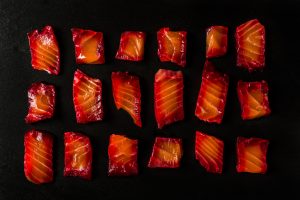From the very first time man cooked over fire, smoke began to weave its mystical flavours into our food. Today, we’re still tinkering with food and smoke, and with the rise in popularity of live fire cooking at restaurants like London’s Temper and those from Francis Mallman, smoke continues to play a vital role in many modern settings.
American style barbecue has opened the floodgates to culinary smoking in recent years, as our fetishisation of this cooking style has grown. Both restaurants and food brands have scrabbled to deliver potent smoke notes to dishes, but often with little thought to the process. Liquid smoke is an abrasive substitute, but one that still finds it’s way into many consumer foods and off the shelf products.
Despite in-house smoking being relatively new ground for many EHOs, most establishments have navigated this treacherous landscape with increased ventilation. Often, restaurants are smoking their meats on a set day of the week then vac-packing it to later use a water bath or grill to finish off the food. This can be a useful workaround when space is limited, but others prefer to go the whole hog and use commercial smokers in outdoor spaces.
Of course, anyone can bung a slab of meat into a smoker and hope for the best, but the careful dance of hot smoking verges on art form. You need to ensure the meat doesn’t dry out, that it retains moisture. You need to select the right wood for it’s natural flavours and be careful not to overpower the rich fat of beef, or the porcine sweetness of pork.
Over-smoking, or using the wrong kind of smoke is a problem often found with smoked salmon. Heavy oak fires tend to obliterate the freshwater flavours from trout or salmon and sometimes rather than a clean oak note, you’ll be left with something that tastes a lot more like a garden bonfire.
Away from the traditional realms of meat and fish, smoking has taken on some great directions in the kitchen. Quick working smoke guns have allowed creative chefs to deliver flavoured clouds to dishes hidden beneath a closh, or trapped within edible structures through modernist techniques like spherification. As well as much loved wood smoke flavours like oak, beech, pecan and mesquite, smoking tea has also resulted in some delicate and effective results.
While Middle Eastern cuisine continues to be taken in new and exciting directions, the flavour of smoke is being embraced with vegetables in dishes like baba ganoush and smoked hummus.
We have a lot to thank American barbecue for. The past few years have allowed a wide spread of consumers to become much more familiar with more pronounced smoke flavours and rather than being something that is taken for granted, it’s a technique now met with more enthusiasm than ever before.
So what does all this mean? When bringing in products that are pre-smoked, you need to find producers and brands you can rely on.


